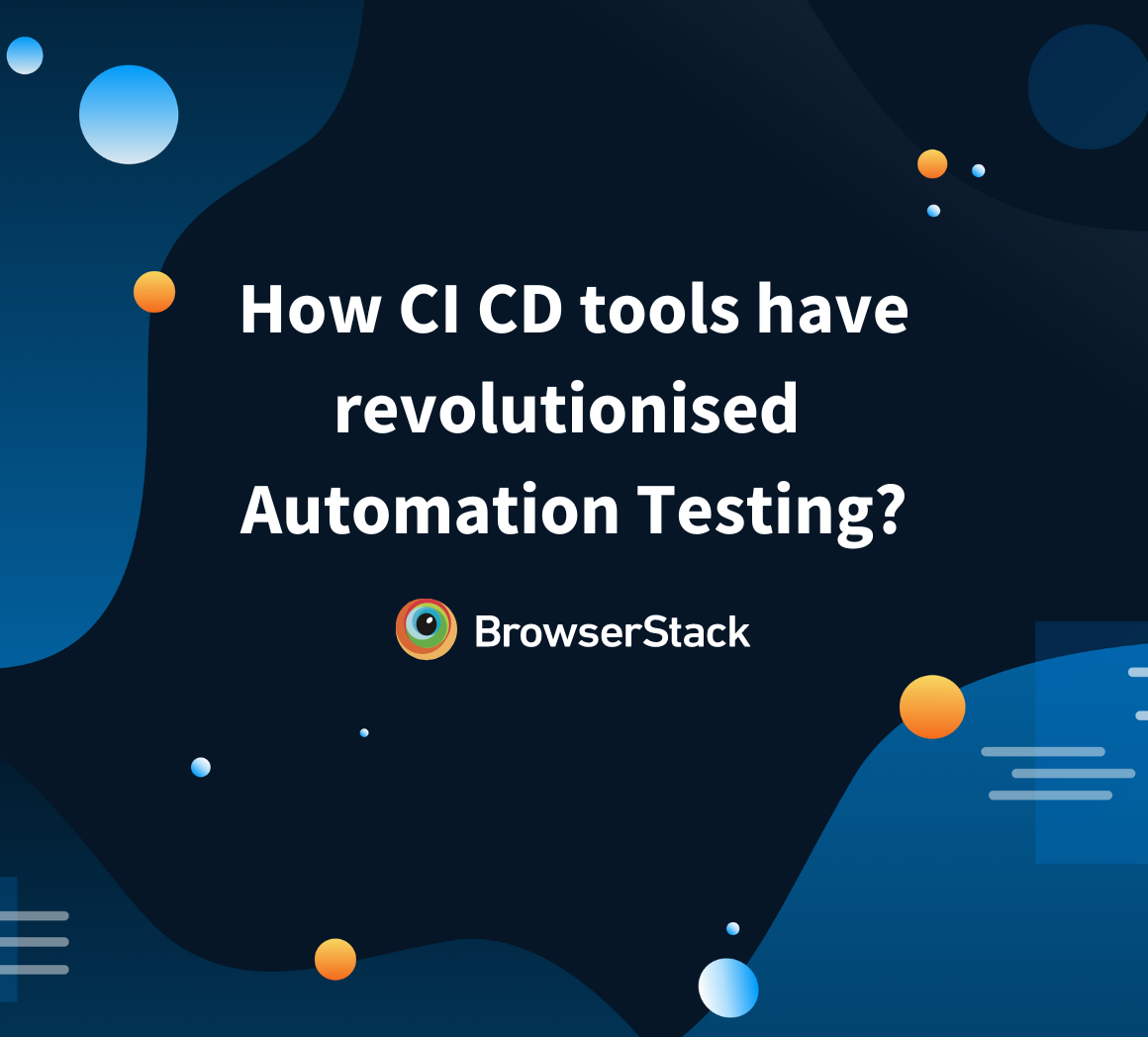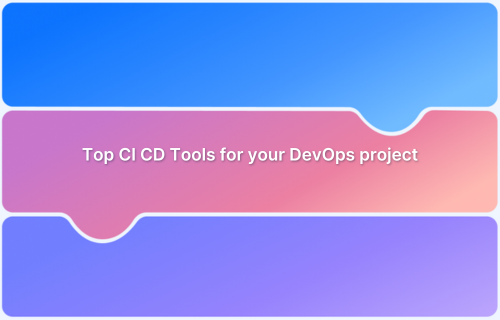Setting up an effective CI/CD pipeline streamlines software development, automates testing, and accelerates deployment. A well-structured pipeline ensures faster releases, fewer errors, and improved collaboration across teams.
Overview
What is a CI/CD Pipeline?
A CI/CD (Continuous Integration/Continuous Deployment) pipeline automates software development, testing, and deployment, ensuring faster and more reliable releases. It streamlines code integration, automated testing, and deployment to production.
Phases of a CI/CD Pipeline
- Development/Code Commit: Developers push code changes to a repository.
- Build: The code is compiled and packaged.
- Test: Automated tests validate functionality, performance, and security.
- Release: The tested build is prepared for deployment.
- Deploy: The code is deployed to staging or production environments.
Key Considerations in the Testing Phase of a CI/CD Pipeline
- Test Data: Ensure accurate, versioned, and reusable test data.
- Test Infrastructure: Use scalable cloud or containerized test environments.
- Test Scripts/Test Cases: Automate test execution to maintain speed and consistency.
- Monitoring & Metrics: Track failures, execution time, and test coverage via dashboards.
This guide covers key steps and considerations to build a robust CI/CD workflow for seamless software delivery.
Understanding CI/CD
CI/CD, in layman’s terms, is a step-by-step approach to continuously and consistently code, build, test, release, and monitor a software product through automation.
Pipelines are pre-defined jobs that help understand what needs to be accomplished and when it has to be done. Jobs are executed in parallel as much as possible to speed up and accelerate the delivery.
A typical CI/CD pipeline would consist of stages where code gets pushed to the repository; the build gets triggered, build is tested and deployed to the production environment.
Building CI/CD pipelines are completely tailor-made based on the needs and requirements and could have multiple stages and jobs, and could be complex and comprehensive.
Typically building a CI/CD pipeline consists of the following phases/stages.
- Code: Checked into the repository
- Build: Build is triggered and deployed in a test environment
- Test: Automated tests are executed
- Deploy: Code is deployed to stage, and production environments.
To build effective pipelines, it is important to ensure that they have the below characteristics:
- Works consistently
- Speed – provide faster feedback
- Scalable – Should be able to scale as per the demands of the jobs
- Availability, reliability, fault-tolerant
- Reusability
Now that we have a solid understanding of some of the key things let us learn how to set up CI/CD pipeline.
Setting up a CI/CD Pipeline
In this section, learn how to build, integrate, and execute robust CI/CD pipelines.
Also Read: How to implement a CI/CD Pipeline?
Development
Developers code and push their code to a shared repository like Git. Ensuring code integration is error-free is one of the most daunting activities since many issues could arise if there are no frequent integrations. One way to address this is to frequently merge the code and validate it. The pipeline gets activated when changes are made to the repository, like code commits. The pipeline downloads the code and initiates the build process.
Build
In this phase, the code is compiled, dependencies are sorted out, artifacts are built, and stored in a repository like Jfrog. The software packages are ready to be deployed; There could be war files, for example, files that get deployed on tomcat and Weblogic.
Environments are created using infrastructure as code, containers are built that run on various pods, and pre-baked images are stored to be rolled out.
Once the environment is ready, various testing activities are carried out
Testing
In the testing phase, it’s essential to focus on a continuous, consistent, faster feedback testing loop.
It is important to build a test platform and framework and have the right testing tools that can easily integrate with the overall CI/CD pipeline to aid robust testing, a faster feedback loop, and drive product success.
Building an effective CI/CD pipeline is not complete without the ability of the pipeline to conduct various testing like Unit tests, Integration tests, API tests, Automated functional tests, Security tests, Performance tests, Accessibility, Cross browser tests, Visual Tests, and many others.
Also Read: What is Continuous Testing in DevOps
Testing pipelines should aim at facilitating early and continuous testing. Unfortunately, it’s still one of the biggest challenges that companies are struggling with today.
Break it down to see what it takes to build a CI/CD that would help conduct testing in a very efficient manner.
- Test Data
- Test Infrastructure
- Test Scripts / Test Cases (automated)
- Monitoring, Test Metrics, Dashboard
Test Data
Test Data is one of the biggest challenges that companies have, where teams cannot carry out testing without the historical data that has been built.
Companies cannot have a fully automated CI/CD pipeline without automating data needs. Test data should be built, managed, and maintained. It is necessary to drive this culture of building and managing data as code.
Managing and maintaining test data helps:
- Drive immutability
- Accelerates CI/CD
- Data governance and security
- Enhance scrum team productivity
Companies need to have clear goals to manage the test data. This could include:
- Identifying an approach to handle the data set as a service or code which would accelerate the loading of data in any environment
- Environments could be created and torn down without dependency on the dataset.
- Teams should follow a consistent process to manage data.
Some ways to overcome data challenges:
- Test Data management tools (TDM) help us with overall data management. With the right tool, you will be able to overcome your challenges with Test Data across the organization. TDM would help reduce time to market by cutting the overall time with data creation, management, environments, and testing.
- Build a tool that could generate XML based on the Database schema and relations. XML files could be used to populate data on the fly. The seed data loader process could be completely automated.
- A data lake could be created and managed, which can act as plug and play to any pipelines to meet any data requirements.
- Caching solutions like Redis could be used for faster storage and data recovery with the pipelines.
- Building, and distributing data sets as containers. For example, Docker images.
- Mocking and virtualization
Test Infrastructure
Infrastructure as code is used today to manage environments but has not factored in testing requirements completely.
To do so, one must:
- Provide the needed scalability, reliability, and availability when building a CI/CD pipeline to carry out various types of testing.
- Integrate testing framework related to automation, performance, security, and others
- Facilitate cross browser, cross OS, cross platform, testing with various combinations
- Accessibility, usability, and End to End test infrastructure should be factored in as part of the CI/CD process.
BrowserStack allows you to perform cross browser and cross platform testing seamlessly. You can test on 3000+ combinations of OS, devices, and versions.
You can also directly integrate with popular CI/CD platforms like Jenkins, Travis CI, TeamCity, etc.
Test Scripts/Test Cases
Companies cannot have a successful CI/CD pipeline to run early in the cycle and across other phases as many teams do not have automated performance, security, accessibility, and test cases.
Below are some ways to overcome them and plug them into the CI/CD pipeline to facilitate early testing.
- Early testing is important.
- Automate, and execute performance tests using API calls, database queries, AWR reports, and other statistics.
- Automate service calls.
- Leverage traffic mocking to capture production traffic and replay on test environments and vice versa.
- Mocking, virtualization, and test modeling can be leveraged.
- Invest in tools/technologies where test scripts could be auto-generated.
- Using platforms like BrowserStack can help to carry out testing efficiently.
Monitoring
Monitoring, Dashboard, and Reports are vital when building a CI/CD pipeline.
- Collecting key testing metrics to make the right decisions is very important when building a CI/CD pipeline.
- A single dashboard to radiate all testing metrics across testing types is critical.
- The report should be able to help quickly identify, isolate and fix problems.
- Monitoring the production environment is also vital.
Also Read: What is Continuous Monitoring in DevOps?
Deploy
The deployment phase helps release software to the production environment with no manual intervention and minimal downtime without impacting end users. There are various strategies that companies adopt depending on their needs and requirements. For example, Blue-green Deployment. Recreate Deployment and Rolling update Deployment
Conclusion
With more and more companies adopting and moving towards cloud and SaaS space, speed, agility, and shipping bug-free products are extremely important and these cannot be achieved without an efficient CI/CD pipeline.
The CI/CD pipeline is not complete in any way without having a robust testing phase setup. Browserstack can help with many requirements of the testing phase, like cross browser testing, visual testing, automating native/hybrid mobile apps, and many others.
It’s essential and paramount for companies to build an effective CI/CD pipeline to succeed as an organization and drive customer success.






